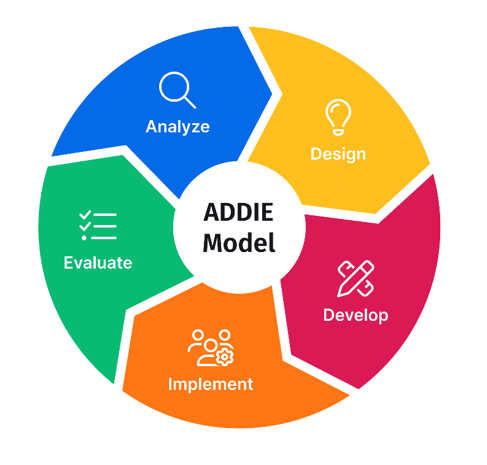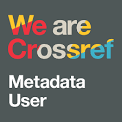Development of Digital-Based Interactive E-Module on Body Measurement and Blouse Pattern Making Material at Public Vocational School
DOI:
https://doi.org/10.51574/ijrer.v4i3.3087Keywords:
ADDIE, Blouse Pattern, Digital Interactive, E-Module, Vocational SchoolAbstract
The study aims to determine the feasibility of implementing a digital-based interactive e-module on body measurement and blouse pattern making at a public vocational school. Additionally, the study aims to determine the students' responses to the digital-based interactive e-module that covers body measurement and blouse pattern making. The development method used by the researcher refers to the ADDIE (Analyze, Design, Development, Implementation, and Evaluation) model for research development. We conducted this research at public vocational school 5 Malang. Statistical tests are carried out to change quantitative data into data that can be interpreted descriptively to determine the feasibility of digital-based interactive e-modules. The findings showed that based on the validation results from the two validators, the present digital-based interactive e-module is declared feasible and can be used in research to make it easier for students to understand learning materials. The student response questionnaire results indicated a percentage of 83.6%, which falls under the "very good" criteria; thus, the interactive e-module is considered very practical for students in class X Fashion Design and Production at Public Vocational School 5 Malang.
References
Al Hanif, M., & Santosa, B. (2023). Development of E-Modules Based on Project Learning in Vocational High Schools. Journal of Vocational Education Studies, 6(2), 264-276. https://doi.org/10.12928/joves.v6i2.9304
Antonietti, C., Cattaneo, A., & Amenduni, F. (2022). Can teachers’ digital competence influence technology acceptance in vocational education?. Computers in Human Behavior, 132, 107266. https://doi.org/10.1016/j.chb.2022.107266
Branch, R. M., & Varank, İ. (2009). Instructional design: The ADDIE approach (Vol. 722, p. 84). New York: Springer.
Clark, R. C., & Mayer, R. E. (2023). E-learning and the science of instruction: Proven guidelines for consumers and designers of multimedia learning. john Wiley & sons.
Delıta, F., Berutu, N., & Nofrıon, N. (2022). Online learning: The effects of using e-modules on self-efficacy, motivation and learning outcomes. Turkish Online Journal of Distance Education, 23(4), 93-107. https://doi.org/10.17718/tojde.1182760
Destiana, D., Humaedi, M. D., & Syofianasari, R. (2024). Modern learning media improves the quality in vocational high school. Hipkin Journal of Educational Research, 1(1), 61-74. https://doi.org/10.64014/hipkin-jer.v1i1.1
Fahrurrozi, M., Mohzana, M., Mispandi, M., & Murcahyanto, H. (2023). Developing Basic Accounting E-Module Based on Scientific Approach in Vocational High Schools. Jurnal Kependidikan: Jurnal Hasil Penelitian dan Kajian Kepustakaan di Bidang Pendidikan, Pengajaran dan Pembelajaran, 9(1), 356-364. https://doi.org/10.33394/jk.v9i1.7117
Fitriana, E., Djono, D., & Sumaryati, S. (2024). Possibilities for using e-modules in vocational high schools to facilitate critical thinking skills. IJORER: International Journal of Recent Educational Research, 5(3), 656-665. https://doi.org/10.46245/ijorer.v5i3.595
Ghofur, A., & Youhanita, E. (2020). Interactive media development to improve student motivation. IJECA (International Journal of Education and Curriculum Application), 3(1), 1-6. https://doi.org/10.31764/ijeca.v3i1.2026
Habibi, A., Sofyan, S., & Mukminin, A. (2023). Factors affecting digital technology access in vocational education. Scientific Reports, 13(1), 5682. https://doi.org/10.1038/s41598-023-32755-6
Hadi, S. H., Permanasari, A. E., Hartanto, R., Sakkinah, I. S., Sholihin, M., Sari, R. C., & Haniffa, R. (2022). Developing augmented reality-based learning media and users’ intention to use it for teaching accounting ethics. Education and Information Technologies, 1-28. https://doi.org/10.1007/s10639-021-10531-1
Hamid, M. A., Aribowo, D., & Desmira, D. (2017). Development of learning modules of basic electronics-based problem solving in Vocational Secondary School. Jurnal Pendidikan Vokasi, 7(2), 149-157. https://doi.org/10.21831/jpv.v7i2.12986
Haryono, P. (2024). Examining the Implementation of the Independent Learning Curriculum in English Language Material at Vocational High Schools. AL-ISHLAH: Jurnal Pendidikan, 16(1), 295-305. https://doi.org/10.35445/alishlah.v16i1.4449
Jatmoko, D., Basuki, B., & Anhar, F. N. (2023). Assessment of the implementation of independent curriculum learning in Vocational High Schools. International Journal of Education, Information Technology, and Others, 6(4), 66-70. https://doi.org/10.5281/zenodo.10444259
Kustyarini, K., Utami, S., & Koesmijati, E. (2020). The importance of interactive learning media in a new civilization era. European Journal of Open Education and E-Learning Studies, 5(2). http://dx.doi.org/10.46827/ejoe.v5i2.3298
Martatiyana, D. R., Usman, H., & Lestari, H. D. (2023). Application of the ADDIE model in designing digital teaching materials. Jurnal Pendidikan dan Pengajaran Guru Sekolah Dasar (JPPGuseda), 6(1), 105-109. http://dx.doi.org/10.55215/jppguseda.v6i1.7525
Mulyasari, R., & Doly, M. (2023). Pengembangan Bahan Ajar Bangun Ruang Sisi Datar Dengan Model ADDIE (Sekolah Dasar). Jurnal Genta Mulia, 14(1). https://doi.org/10.61290/gm.v14i1.698
Murzyn-Kupisz, M., & Hołuj, D. (2021). Fashion design education and sustainability: Towards an equilibrium between craftsmanship and artistic and business skills?. Education Sciences, 11(9), 531. https://doi.org/10.3390/educsci11090531
Mutia, T., Suharto, Y., Sahrina, A., Wahyudi, A., Atmaja, M. A. R., & Aprilia, R. (2025). Efektivitas E-Modul Interaktif Berbasis Project Based Learning Terhadap Kemampuan Berfikir Kreatif Siswa. Geodika: Jurnal Kajian Ilmu dan Pendidikan Geografi, 9(1), 42-51. https://doi.org/10.29408/geodika.v9i1.28193
Nurhayati, S., Fitri, A., Amir, R., & Zalisman, Z. (2024). Analysis of the implementation of training on digital-based learning media to enhance teachers’ digital literacy. AL-ISHLAH: Jurnal Pendidikan, 16(1), 545-557. https://doi.org/10.35445/alishlah.v16i1.4029
Rahmagandi, I. O., Khumaedi, M., & Anis, S. (2024). Development of a Flipbook-Based E-Module to Enhance Learning Outcomes in Manufacturing Design for Vocational High School Students. Journal of Vocational and Career Education, 9(1), 85-91. https://doi.org/10.15294/jvce.v9i1.23623
Rahmatunisa, N., Sofyan, H., Daryono, R. W., & Nurtanto, M. (2022). Feasibility of Clinical Dietetics E-Module to Improve Learning Achievement of Vocational Students. Journal of Education Technology, 6(1), 45-55. https://doi.org/10.23887/jet.v6i1.41542
Rufaidah, L. N., Umamah, N., & Surya, R. A. (2021). Learning environment technology-based in improving students’ independent learning. In IOP Conference Series: Earth and Environmental Science (Vol. 747, No. 1, p. 012056). IOP Publishing. https://doi.org/10.1088/1755-1315/747/1/012056
Saadah, M. (2017). Pembuatan Media Interaktif Pada Materi Grading Pola Dasar. Jurnal Online Tata Busana, 6(1). https://doi.org/10.26740/jurnal-online-tata-busana.v6i1.17664
Saputri, D. Y., Rukayah, R. R., & Indriayu, M. I. (2018). Integrating game-based interactive media as instructional media: students’ response. Journal of Education and Learning (EduLearn), 12(4), 638-643. https://doi.org/10.11591/edulearn.v12i4.8290
Smaldino, S. E., Lowther, D. L., Mims, C., & Russell, J. D. (2019). Instructional technology and media for learning. Pearson Education, Incorporated.
Spatioti, A. G., Kazanidis, I., & Pange, J. (2022). A comparative study of the ADDIE instructional design model in distance education. Information, 13(9), 402. https://doi.org/10.3390/info13090402
Syahrial, S., Asrial, A., Kurniawan, D. A., & Damayanti, L. (2021). Comparison of print modules and E-modules to the tolerance character of students. International Journal of Elementary Education, 5(2), 298-307. https://doi.org/10.23887/ijee.v5i2.34351
Wicaksana, I. P. G. C. R., Agung, A. A. G., & Jampel, I. N. (2019). Pengembangan e-komik dengan model addie untuk meningkatkan minat belajar tentang perjuangan persiapan kemerdekaan indonesia. Jurnal Edutech Undiksha, 7(2), 48-59. https://doi.org/10.23887/jeu.v7i2.23159
Wulansari, K., Hamdani, H., & Putri, N. A. E. (2024). Design of Learning E-Modules. In International Conference on Applied Science and Technology on Social Science 2023 (iCAST-SS 2023) (pp. 283-294). Atlantis Press. https://doi.org/10.2991/978-2-38476-202-6_39
Yu, Z., Yu, L., Xu, Q., Xu, W., & Wu, P. (2022). Effects of mobile learning technologies and social media tools on student engagement and learning outcomes of English learning. Technology, Pedagogy and Education, 31(3), 381–398. https://doi.org/10.1080/1475939X.2022.2045215

Downloads
Published
How to Cite
Issue
Section
License
Copyright (c) 2025 Rentya Sari Devi, Esin Sintawati, Umi Kulsum, Ria Riska

This work is licensed under a Creative Commons Attribution-ShareAlike 4.0 International License.









1.png)













